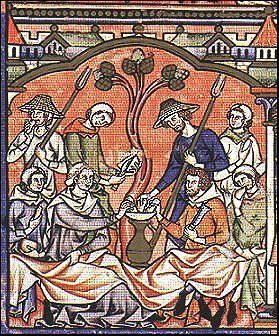 The set of multiples of a number x is formed by multiplying that number by all the other natural numbers and, therefore, the number of multiples of any number is infinite. Thus, the multiples of the number 3 are the numbers 0, 3, 6, 9,12 and so on until infinity. Therefore, we say that a number A is a multiple of a number B when the number A is obtained by multiplying the number B by another number C.
The set of multiples of a number x is formed by multiplying that number by all the other natural numbers and, therefore, the number of multiples of any number is infinite. Thus, the multiples of the number 3 are the numbers 0, 3, 6, 9,12 and so on until infinity. Therefore, we say that a number A is a multiple of a number B when the number A is obtained by multiplying the number B by another number C.
Illustrative examples
We say that the number 15 is a multiple of the number 3, since 15 is equal to 3 multiplied by 5. In other words, the number 3 is contained in the number 15 five times, since if we add the number 3 five times we obtain the number 15 At the same time, the number 15 equals 5x3 and, consequently, 15 is a multiple of 5.
All multiples can be at least multiples of two numbers but can have many more multiples. For example, the number 12 can be obtained from the multiplication of 6x2 or 2x6, but we can also obtain it from 4x3 or 3x4. Thus, the number 12 is a multiple of 6, 2, 4 and 3. In addition to being multiples of several numbers, all numbers are multiples of themselves (12 is a multiple of itself because multiplying it by the unit is gets the same value).
Properties of multiples numbers
To understand how these numbers work, it is necessary to know what their different properties are.
1- The first property is that any number, except 0, is a multiple of itself and of the number 1 (Ax1 = A).
2- The second property is that the number 0 is a multiple of all the numbers (Ax0 = 0).
3- The third property states that if a number A is a multiple of another number B, the division between A and B will result in a number C, in such a way that the final result is an exact number (for example, if I divide 15 by 5 you get an exact number, 3).
4- The fourth property is that if we add two multiples of the number A, we will obtain another multiple of the number A.
5- A fifth property states that if we subtract two multiples of the number A, another multiple of the number A will be obtained as a result.
6- According to the sixth property, if the number A is a multiple of a number B and the number B is a multiple of another number C, then the numbers A and C are multiples of each other.
7- A seventh and last property tells us that if a number A is a multiple of another number B, then all multiples of the number A are also multiples of the number B.
Photo: Fotolia - colorfulworld









